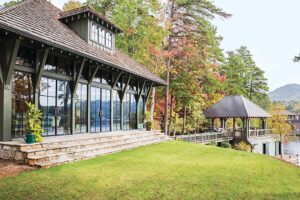If you’re looking to step into a world of sacred rivers, rugged terrain, and surreal Himalayan beauty, the Gaumukh Tapovan trek is it. Here’s a no-fluff, straight-to-the-point breakdown of each day of the trek, based on my actual experience. I’ve also quietly mentioned the company I went with—they handled everything smoothly without being pushy, which really made a difference.
Day 1: Arrival at Gangotri (10,200 ft)
The journey starts with a long but scenic drive to Gangotri from Dehradun or Rishikesh. Expect 10–12 hours by road, with winding mountain paths that test your motion sickness tolerance but reward you with beautiful river views. Gangotri is a temple town buzzing with pilgrims and set against a backdrop of dramatic peaks.
I got there in the late afternoon, spent the evening getting used to my surroundings, and went to the well-known Gangotri Temple. The town sits at 10,200 ft, so taking it easy the first day is essential. I stayed at a simple guesthouse arranged by the company—clean, quiet, and comfortable. If you’re going with someone like The Searching Souls (not promoting, just referring—they were solid), they’ll usually include this overnight stay.
Day 2: Gangotri to Chirbasa – 9 km (11,700 ft)
After breakfast, we started our trek. You can see pine trees and the thundering water below as the trail meanders alongside the Bhagirathi River. It’s a moderate hike—no major climbs but enough uneven sections to remind you it’s a real trek.
The path is mostly dusty but well-marked. You’ll find forested sections early on, but things get rockier as you approach Chirbasa. It took about 5–6 hours with breaks. Chirbasa is essentially a camping ground surrounded by tall blue pines. No permanent structures, just tents pitched near the river.
This night, I really began to feel the cold—layers are a must. The food our trek team cooked was basic but warm and satisfying, and honestly, after that hike, even Maggi tasted like five-star cuisine.
Day 3: Chirbasa to Bhojbasa – 5 km (12,400 ft)
This is a shorter stretch and gives your body more time to adjust to the altitude. The scenery shifts quickly—trees thin out, and you’re surrounded by open valleys and big skies. The Bhagirathi peaks come into view here, and they are a sight to behold.
Trekking time was around 3 hours, which left plenty of time to rest at Bhojbasa. This is the last campsite with a relatively wide flat area before you hit the glacier region. There’s a GMVN guest house here, but most people (like me) camp.
Evening walks here are magical. You’re far from cities, and the stars are unreal. This was also the night where altitude started to test my lungs a bit. Hydrate and rest well—tomorrow is the toughest stretch.
Day 4: Bhojbasa to Gaumukh to Tapovan – 10 km (14,600 ft)
This is where things get real. The first 4 km to Gaumukh is rocky but manageable. The glacier snout is something else—it looks like a giant frozen wave emerging from the earth. It’s surreal knowing that the mighty Ganges starts right here.
The ascent to Tapovan from Gaumukh is challenging and steep. You cross loose boulders, moraine, and small glacial streams. It’s challenging, especially at that altitude, but absolutely worth it. Tapovan is a flat meadow at 14,600 ft, with the towering Mt. Shivling right in front of you.
Camping here was the highlight of the entire trek. The landscape is wild, untouched, and humbling. We set up base, had an early dinner, and huddled into sleeping bags while the temperature dropped below zero.
Day 5: Tapovan to Bhojbasa – 10 km (Descent)
The descent feels easier on the lungs but harder on the knees. You retrace your path back down to Bhojbasa, crossing the glacier zone again. The views remain spectacular, and this time, I took more breaks just to take it all in.
The ascent to Tapovan from Gaumukh is challenging and steep.f My energy levels were surprisingly better than expected—maybe it was the oxygen-rich air as we dropped altitude.
This night felt more relaxing. There’s a certain peace that comes with surviving Tapovan and coming back in one piece. I had the best sleep of the whole trek that night.
Day 6: Bhojbasa to Gangotri – 14 km

This final stretch back to Gangotri felt like a victory lap. It’s a long day but mostly downhill. We started early and made steady progress, stopping occasionally to snap those last few shots and breathe in the mountain air one final time.
Once we reached Gangotri, I felt both exhausted and accomplished. After six days of trekking in raw terrain, that first hot meal in a real kitchen felt like a luxury.
Quick Distance Recap
| Day | Route | Distance | Altitude Gain |
|---|---|---|---|
| Day 1 | Arrive Gangotri | – | 10,200 ft |
| Day 2 | Gangotri to Chirbasa | 9 km | +1,500 ft |
| Day 3 | Chirbasa to Bhojbasa | 5 km | +700 ft |
| Day 4 | Bhojbasa to Tapovan via Gaumukh | 10 km | +2,200 ft |
| Day 5 | Tapovan to Bhojbasa | 10 km | –2,200 ft |
| Day 6 | Bhojbasa to Gangotri | 14 km | –2,200 ft |
Final Thoughts
This trek is not just a physical journey—it’s a deeply personal one. You are humbled, pushed, and left in awe by it. Whether it’s your first Himalayan trek or your tenth, Gaumukh Tapovan offers something unique.
If you’re planning to go, I’d definitely suggest going with a team that knows the terrain of tapovan gaumukh trek
. I went with The Searching Souls—not a shoutout, just a genuine recommendation. They handled the logistics, permits, and safety with calm professionalism. That gave me the space to enjoy the trek instead of worrying about camp gear or route confusion.
FAQs
1. How difficult is the Gaumukh Tapovan Trek?
Moderate to difficult. The altitude gain and glacier crossing make it challenging but manageable with preparation.
2. Can beginners do this trek?
If you’re reasonably fit and have done at least one prior trek, yes. Avoid if you’re completely new to trekking.
3. How to get a permit for the trek?
You can get it at Gangotri or let your trek company handle it. Carry ID and passport-size photos.
4. When is the best time to go?
May–June and September–October. Avoid monsoon season due to landslides.
5. Is a guide necessary?
Highly recommended. The trail near Gaumukh and Tapovan can be tricky. A guide or organized team ensures safety.



